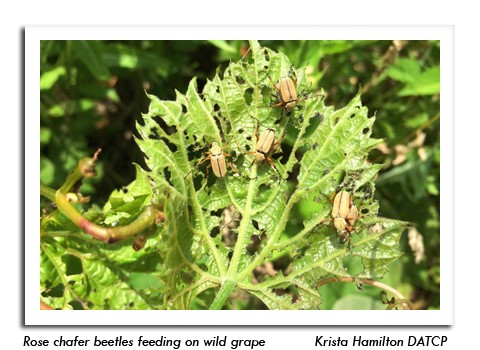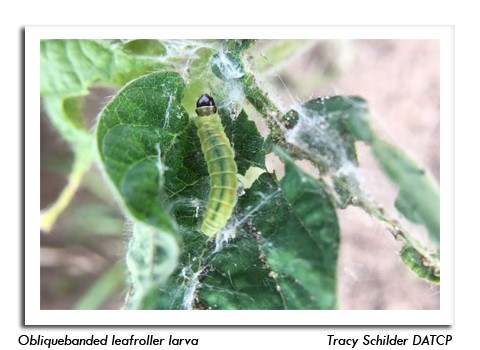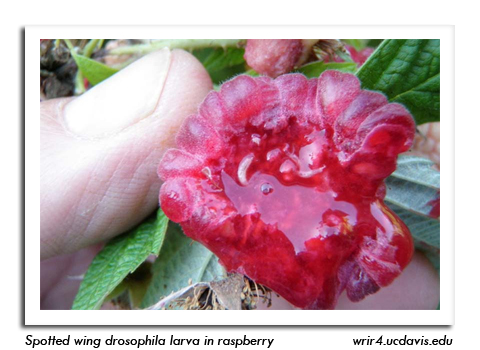
 |
|
|
Fruits
Volume 64 Number 8 Date 06/20/2019 ROSE CHAFER - This generalist pest is appearing in vineyards and orchards. Scouting twice weekly is advised for sites on sandy soils and those with a history of rose chafer problems once the first beetle is observed. An average of two beetles per vine has been suggested as the basis for initiating controls, although the feeding period is usually brief (<3 weeks) and the beetles usually disappear by July without causing permanent damage. Commercially available traps can attract beetles from surrounding areas and are not recommended for use in vineyards. SAN JOSE SCALE: - Monitoring for crawlers by taping scaffold branches should be underway. Concentrating the tape on younger limbs (2-3 inches in diameter) in blocks with a history of SJS damage is advised. A 10x hand lens is required to view the oval, bright-yellow crawlers. A capture of 10-15 crawlers in a few days, or 10 crawlers on one tape, may warrant control. OBLIQUEBANDED LEAFROLLER - Larval offspring from the first moth flight are emerging across the southern half of the state. The small, newly-hatched caterpillars are controlled by most products applied for codling moth (except granulosis virus and mating disruption), but scouting is still required to determine if codling moth sprays have effectively reduced OBLR populations or if additional measures are needed to prevent fruit damage. Sampling for fruit and foliar feeding should begin about a week after the first moths are captured in pheromone traps. SPOTTED WING DROSOPHILA - The first SWD flies were captured in traps by June 19 in La Crosse County. This date compares to June 1 in 2018, June 5 in 2017, and June 10 in 2016. Berry growers should intensify monitoring and scouting efforts at this time, and prepare to implement SWD treatment programs. Commercial SWD traps and lures are available through Great Lakes IPM or growers can make their own traps using a clear plastic deli container baited with either a yeast-sugar mix (one tablespoon of active dry yeast plus four tablespoons of sugar dissolved in 12 ounces of water) or apple cider vinegar. A few drops of unscented dish soap should be added to the homemade traps to break the surface tension and kill the flies. REDBANDED LEAFROLLER - Moth counts should begin to increase again by July as the second flight starts. Minimal RBLR activity was noted again this week, with average counts varying from 0-14 moths per trap and averaging only two per trap. APPLE MAGGOT - Emergence of flies from the soil is likely to begin at advanced sites before the end of the month. This annual event corresponds with the accumulation of 900 degree days (modified base 50°F) when soil moisture is appropriate. Apple maggot traps should be placed next week in perimeter trees adjacent to abandoned orchards or woodlots to capture the earliest flies. -- Krista Hamilton, DATCP Entomologist 





|
|
|